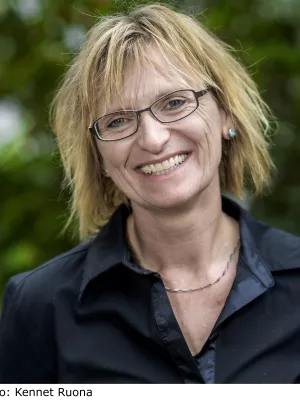
Natascha Kljun
Professor

Effect of spatial heterogeneity on the validation of remote sensing based GPP estimations
Author
Summary, in English
Satellite based remote sensing provides an efficient way to estimate carbon balance components over large spatial domains with acceptable temporal and spatial resolution. In the present study remote sensing based gross primary production (GPP) estimations were evaluated using data from a tall eddy-covariance flux tower, located over a heterogeneous agricultural landscape in Hungary. Four different methods were used to simulate 8-day mean GPP for the tower site based on the MOD17 light use efficiency model. Additionally, we present a novel approach for model validation to exploit the advantage of footprint size similarity between remote sensing and the hourly eddy covariance signal measured at the tall tower. Besides using footprint information for the model validation we performed downscaling of MOD17 using 250 m resolution MODerate resolution Imaging Spectroradiometer (MODIS) Normalized Difference Vegetation Index (NDVI) dataset in order to address land use heterogeneity. The results showed that GPP was underestimated by MOD17 especially in years with average precipitation during the growing season, while model performance was better during dry years. Our downscaling technique significantly improved agreement between the MOD17 model results and the eddy covariance measurements (modeling efficiency (ME) increased from 0.783 to 0.884, root mean square error (RMSE) decreased from 1.095 g C m−2 day−1 to 0.815 g C m−2 day−1), although GPP remained underestimated (bias decreased from −0.680 g C m−2 day−1 to −0.426 g C m−2 day−1). Model evaluation results suggest that model performance should be optimally evaluated using RMSE, index of agreement (IA), ME and bias. The presented method is applicable to any eddy-covariance tower with limitations depending of the complexity of landscape around the flux tower. As incorporation of footprint information clearly impacts validation results, future model validation and/or calibration should also involve source area estimation which can be easily implemented following the presented approach.
Publishing year
2013-06-15
Language
English
Pages
43-53
Publication/Series
Agricultural and Forest Meteorology
Volume
174-175
Links
Document type
Journal article
Publisher
Elsevier
Topic
- Meteorology and Atmospheric Sciences
Keywords
- Cropland
- Eddy covariance
- Footprint
- Light use efficiency model
- MODIS
Status
Published
ISBN/ISSN/Other
- ISSN: 1873-2240